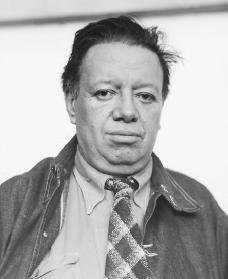Baroque Art:
1. Between which tow ages is the Baroque?
a) Renaissance and Neoclassical
b) Renaissance and Gothic
c) Romanesque and Gothic
2. Which of the following pictorial construction can not be classified as Baroque Art?
a) "Ladies in waiting" - Velázquez
b) "Saint Pedro's crucifixion" - Caravaggio
c) "Last Supper" -
3. Which of the following cathedrals is a Baroque Art example?
a) Havana's Cathedral
b) Burgo's Cathedral
c) Santiago de Compostella's Cathedral
4. Where was born the baaroque musician Johann Pachelbel?
a) Italy
b) Austria
c) Germany
5. Who composed "Four seasons"?
a) Allegri
b) Vivaldi
c) Bach
Answers: 1a, 2c, 3a, 4c, 5b.
Gothic Art:
1. Which artistic movement follows Gothic?
a) Baroque
b) Romantic
c) Renaissance
2. Which monument is considered as the first of Gothic Art?
a) "San Mabrosio de Milán" basilica
b) "Royal abbey of Saint-Denis" basilica
c) "Saint Maria's church of the Capitol in Colonia" basilica
3. To whom is dedicated the Burgo's cathedral?
a) To Virgin Mary
b) To Saint Pierre
c) To Saint George
4. What is the name of the famous gothic cathedral of Prague?
a) Corleone
b) Saint Vito
c) Vernher
5. Where is bury Ramón Berenguer I, Count of Barcelona?
a) Lugo's cathedral
b) Barcelona's cathedral
c) Palma's cathedral
Answers: 1c, 2b, 3a, 4b, 5b.
Plastic Arts:
1. Who paint "The Circus"?
a) Veronesb) Masaccio
c) Seurat
d) Giotto
2. Who paint "El pifano"?
a) Mantegna
b) Manet
c) Rafael
d) Piero della Francesca
3. Who paint "Figure on the Window"?
a) Miró
b) Dalí
c) Klimt
d) Vermeer
4. Who paint "Woman frying eggs"?
a) Friedrich
b) Dalí
c) Velázquez
d) Turner
5. Who paint "Young girl bruching"?
a) Morales
b) Brueghel el Viejo
c) Tiziano
d) Cezanne
6. Who paint "The pretty naked"?
a) Goya
b) Friedrich
c) Hals
d) Renoir
7. Who paint "Napoleon in Saint Bernard"?
a) Velazquez
b) Miró
c) David
d) Cezanne
8. Who paint "The Constantine dream"?
a) Renoir
b) Piero della Francesca
c) Giorgione
d) Ribera
9. Who paint "The sieves of wheat"?
a) Picasso
b) Courbet
c) Sorolla
d) Tapies
10. Who paint "Woman with mandolin"?
a) Delacroix
b) Tiepolo
c) Rubens
d) Chagall
Answers: 1c, 2b, 3b, 4c, 5c, 6a, 7c, 8b, 9b, 10b.
General Art:
1. Who said "Art is intermediary of inexpressible"?
a) Goethe
b) Leonardo
c) Miguel Angel
2. In which year the Tutankamón tomb was discovered?
a) 1918
b) 1920
c) 1922
3. Ishtar Door take you to the palace of the King...?
a) Nabucondonosor III
b) Nabucondonosor VII
c) Nabucondonosor II
4. From where is the "Baseboard of Archers"?
a) Apadana's Palace
b) Artajerje's Palace
c) Babylon
5. What is the name of the Greek glass used to mix wines?
a) Hidria
b) Lecito
c) Crátera
6. Why the Chapel Sixtina y called in this way?
a) Made on memory of Pope Sixto IV
b) Made on memory of PopeSixto II
c) Made to honor to Saint Sixta
7. On which of these countries did not appear the Renaissance?
a) France
b) Spain
c) The United States of America
8. Which culture let us the best cave paintings at the end of the last glaciation?
a) Achelense
b) Magdeleniense
c) Solutrense
9. To whom is address the Renaissance arte?
a) Shopkeepers
b) Rich
c) To all the world
10. How was originally denominated the city where is the temple of Poseidon?
a) Poseidón
b) Crotona
c) Paestum
Answers: 1a, 2c, 3c, 4b, 5c, 6a, 7c, 8b, 9b, 10c.
Translated by Laura












